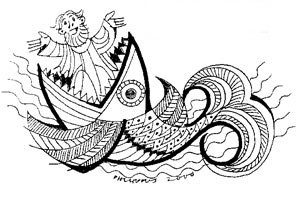

 |
Cemetery Maintenance with Livestock
Gary Ashbeck
View The Working Animals Photo Album
At St. Peter's cemetery we are experimenting with old world methods of cemetery maintenance that are not petroleum based. Petroleum is a finite resource and we are rapidly approaching a critical point of supply vs. demand. We include that work in our ongoing work with organic gardening as we have discovered that one hand washes the other in regard these methods. We are the stewards of Llamas, goats and Guinea Fowl. The llamas and goats help with grounds maintenance and provide us with fertilizer. The Guinea fowl help us with pest control and alert us to unwanted guests whether animal or human. Stewardship of the earth is an important part of our work because we need to work to protect all of God's creation not just God's people. After all we only have one earth and we need to sustain Mother Earth to sustain the human race. Here is a brief description on what you will find in the barn yard here at Jonah House.
We are the stewards of two different kinds of goats. We have Nubians and some sort of dwarf goat that is likely a crossed with different breeds. The Nubian is a relatively large dairy goat of Oriental origin. We do not use our goats for milk right now as we are only in an experimental phase. We have two bucks here at St. Peter's Cemetery. Bucks can grow 32" or more at withers (the high part of the back) and weigh around 175 lbs. St. Peter's Nubians are named Paul and Silas. We have three dwarf goats. The doe is named Elisha, and the two bucks are named Elijah, and Eleazar. The goats eat grass and browse on most everything else. They get close to the tombstones and eat the invasives that grow near and between the stones. Most importantly they eat Multiflora Rose (Rosa multiflora), and Poison Ivy which are both quite abundant in the cemetery preventing the growth of healthy trees and a general nuisance to our work clearing. The goats do not eat the grass so short that it kills the grass like sheep. The goats are clearing brush and keeping the grass trimmed. We have reduced the mowing in the fenced area to a few times a year as opposed to most every week. We have found that the Nubian goats eat most everything and we are very pleased with their brush control. The Dwarf goats are fussier eaters and have been chewing the bark on the fruit trees and do not eat the amount or the variety invasive species that the Nubians do. Their manure is used in the garden however goats deposit freely and have been known to deposit in the same spot that they sleep in. As a result it keeps us busy cleaning the barn out and it is generally more difficult to collect goat manure.
In our discernment about whether to get goats to control brush and grass growth we learned that llamas make natural shepherds. Over the years people have released cats and dogs in the cemetery and there are now wild dogs. These wild dogs would threaten a herd of goats. We found llamas to protect the goats.
The two llamas are named Naomi and Micah. Naomi is a female and Micah a male. Llamas graze on grasses and browse on leaves. We provide grain to provide supplemental vitamins and minerals. Feeding llamas grain also fosters more interaction between them and humans. We are able to get them on leads and take them for walks on the cemetery grounds. In winter months we also provide hay. A bale of hay will feed an adult llama for a week or so. Llamas make quite a variety of sounds. The most common sound is a humming noise. They have different hums. For example they have an uncertain hum and a worried hum. They will also hum if they are pleased. If a llama feels a danger they will make an alarm call which warns the rest of the herd of the danger. For this reason they are good to keep with other herd animals like sheep or (as in our case) goats and Guinea Fowl. They defend the herd by kicking an aggressor and have been known to stomp an aggressor to death. Despite this defensive aggression they are very docile animals although at times resistant (they may get that from us). Adult llamas are usually between 300 and 450 pounds and stand about five to six feet tall. They reach their full growth somewhere between three and four years of age.
We use Llama manure in our garden. The manure is excellent for gardening. It is a slow release fertilizer and will not burn plants. It can be used for indoor plants as there is no smell to it when it is dried. The males usually deposit in the same place and form piles for ease in collection. The females tend to be a bit messy in comparison, but still deposit in the same vicinity. Llamas do spit but very seldom. They have been known to spit in anger when they were undergoing a sheering or at each other over food. The spit consists of chewed up grass. One often knows when a llama is about to spit. Body language provides a warning; head up and ears back.
Guinea fowl were originally of West Africa. They birds weigh around 3 1/2 lbs. Since they have a very annoying scream when disturbed they are seen as a protection from hawks and anything else that moves. No strange occurrence escapes notice. They eat insects and ticks so their use in areas with ticks carrying Lymes disease is sometimes sought after. St. Peter's has ticks although it is unclear whether they carry the disease. Guineas will also eat insects from the garden, an organic method of pest control. We currently have ten, the eleventh having met an untimely demise. Our Guinea Fowl reside in a hutch in the pasture so as to be protected by the Llamas as well. They sometimes will even roost in trees.
We are also the stewards of three cats: Malachi, Mango, and Bobo. Malachi and Mango take up residence in the house while Bobo resides in the barn. These cats get mice (and sometimes birds), as well as entertain both the animals and the humans at the cemetery. All of them enjoy long walks in the woods and sunbathing.
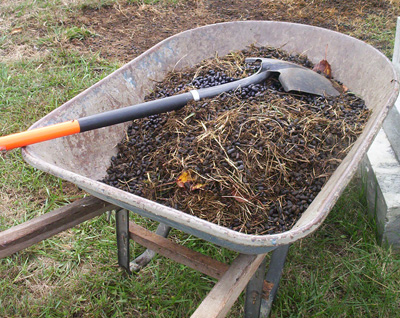 |
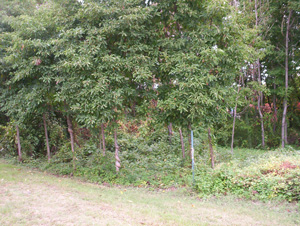 |
|---|---|
| Black Gold: llama beans | Brush in St. Peter's Cemetery |
 |
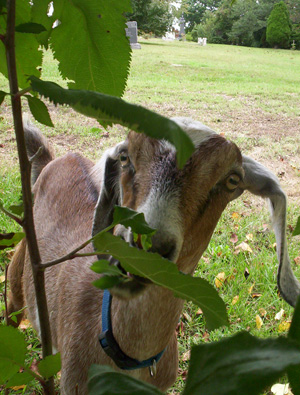 |
| Llamas and goats clearing in harmony | Silas the goat eating leaves |
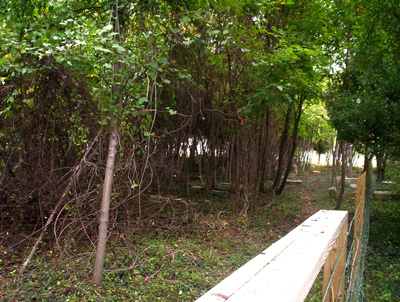 |
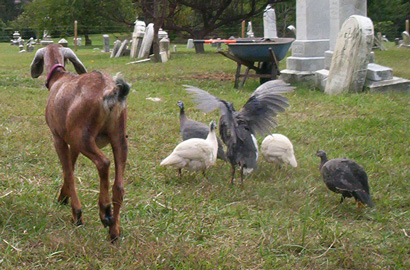 |
| Area the herd cleared | Goats and guineas living in harmony |
 |
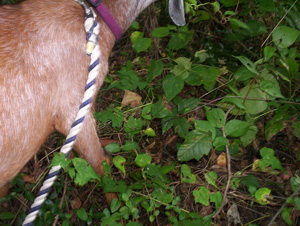 |
| Goat eating multiflora rose plant | goat eating poison ivy |
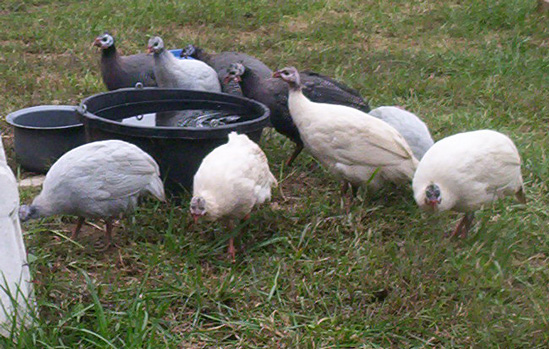 |
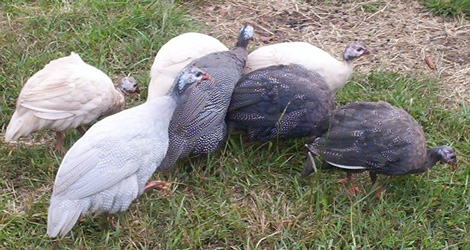 |
| Guinea Fowl eating ticks and other pernicious insects | |
 |
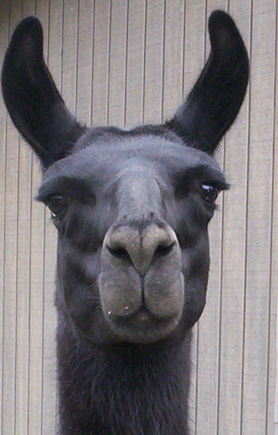 |
| Liz and llama | Micah the llama |
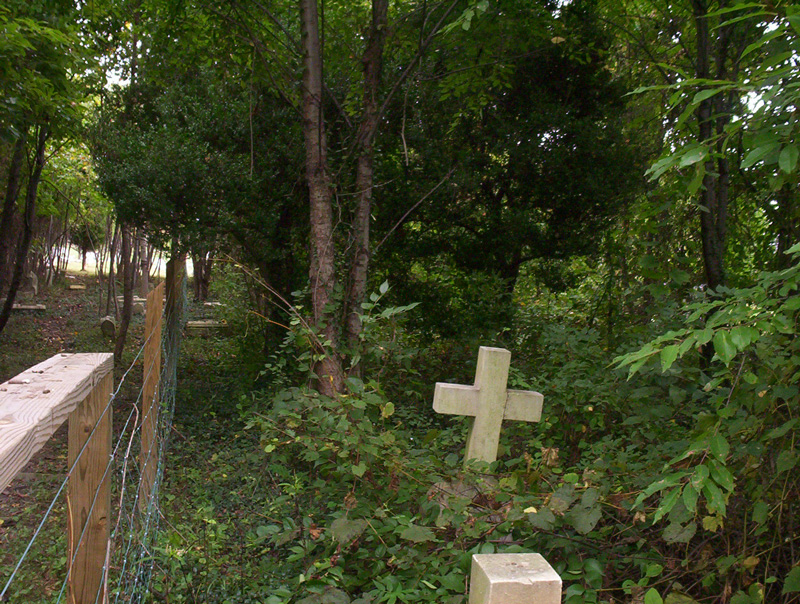 |
|
| uncleared area of St. Peter's Cemetery |